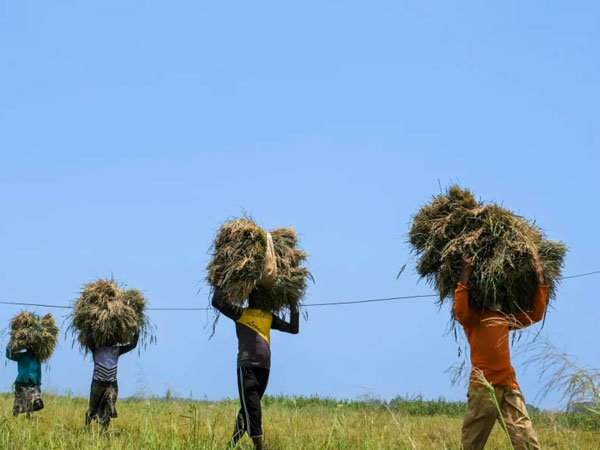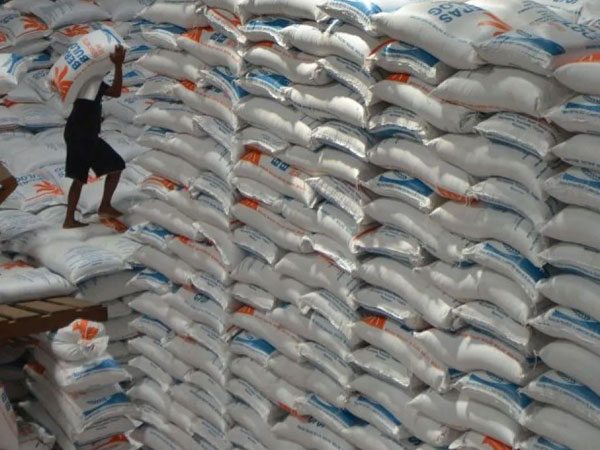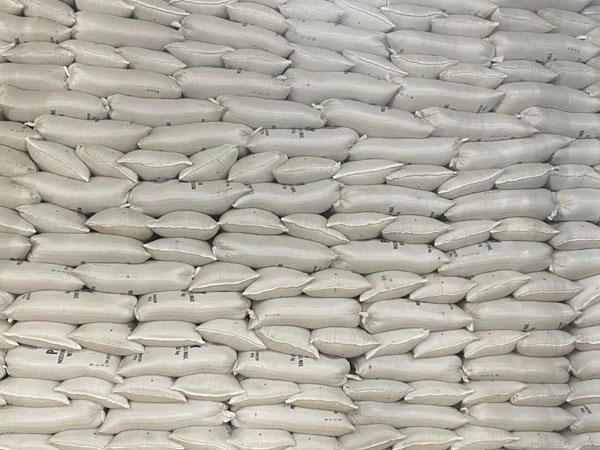 Despite a significant increase in Boro rice production in the haor (marshy) region—thanks to favourable weather this year—the price of newly harvested paddy has not dropped, due to the enhanced bargaining capacity of farmers, according to market players.
Despite a significant increase in Boro rice production in the haor (marshy) region—thanks to favourable weather this year—the price of newly harvested paddy has not dropped, due to the enhanced bargaining capacity of farmers, according to market players.
Traders and suppliers of rice-crushing mills at Dhaner Galla (a paddy trading hub) in Ashuganj, on the bank of the Meghna River, observed that unlike in previous seasons, the current season has not seen a flood of paddy entering the market. As a result, prices have not fallen during the harvest.
Traders and some affluent farmers come to this market from the low-lying rice-growing haor areas of Kishoreganj, Netrokona, Sunamganj, Habiganj, and a few adjacent districts, which collectively account for 10% of the national Boro rice output. Due to its proximity to Dhaka, Ashuganj in Brahmanbaria has also emerged as a major rice-supply hub after the northern districts.
Several farmers interviewed told this writer that they were selling only a small portion of their produce to meet essential needs, while holding on to the rest in anticipation of higher prices.
Both small traders and farmers said they did not see any syndicate—often alleged—controlling rice prices. Rather, each party was bargaining to benefit from either selling or buying. Rice prices rose significantly after the last Aman season (second only to Boro), due to a production shortfall caused by natural calamities, including flooding.
On 2 May, the selling price at Ashuganj market was around Tk1,000 per maund (approximately 40 kilograms) for the coarse variety and up to Tk1,250 per maund for the fine variety. Traders selling paddy to rice millers said they bought it from farmers in the growing areas at Tk950 and Tk1,175 per maund respectively. The official cost of production for each maund of paddy was estimated at Tk800.
Officials concerned said the country may produce 2.26 crore tonnes of Boro rice this year, in line with the government's target, compared to 2.10 crore tonnes last year. “Boro rice meets 58% of the national demand,” said an official of the Bangladesh Rice Research Institute.
Idris Miah, 53, a farmer from Bajitpur, Kishoreganj, who harvested about 480 maunds of coarse paddy, said he achieved around 10% higher yield this year by cultivating six acres of land. He sold some paddy locally for Tk950 per maund—compared to a production cost of approximately Tk800—but managed to get around Tk1,000 at the Ashuganj market. “As paddy prices are not high at the beginning of the harvesting season, I will stock some of my produce to sell later when prices may rise,” he expressed his hope.
Another farmer, Riton Miah, 47, from Madon, Netrokona, was glad to have achieved higher paddy production—90 maunds per acre—by spending Tk750 per maund. “Nowadays, many farmers are not bound to sell their entire harvest at the beginning of the season. Although many of us are storing rice in anticipation of higher prices, prices may not spike as they did last year due to this year’s higher production,” he opined.
Asked whether there was any syndicate in the market, he said that apart from farmers, rice collectors (small traders), wholesalers, traders, and representatives of rice mills were all active. “How can a syndicate operate when everyone is bargaining?”
Standing on a boat, trader Gazi Sharif Khan noted that when farmers sell paddy for Tk950 per maund, traders make a profit of Tk30 per maund, and wholesalers Tk20 per maund, by selling to millers. “Whenever prices rise, farmers get the information—thanks to mobile phones—and raise their asking price,” he pointed out.
Chand Miah, a representative of Haji Dana Miah and Sons rice mills in Ashuganj, collected paddy directly from the rice-growing areas. “Favourable weather, along with better technology and inputs, helped farmers achieve better yields this year. They are no longer compelled to sell their produce at throwaway prices; they can sell directly to us as well,” he said.
Shahin Alam, owner of a rice mill in Shohagpur, Ashuganj, was buying nearly 4,000 maunds of rice daily, paying on average Tk1,050 per maund for coarse rice and Tk1,250 for fine rice. “There is a chance of a paddy shortfall, as many farmers are now focusing more on cash crops such as vegetables,” he said.
Discussing this year’s Boro output and price situation, Dr Mizanur Rahman, professor of agronomy at Sher-e-Bangla Agricultural University, said that despite a slight increase in production costs, the output might exceed the target, thanks to favourable weather. “Marginal farmers are getting better prices also due to the higher procurement price offered by the government for the purchase of half a million tonnes of paddy,” he added.
Regarding the gap between paddy and rice prices, he explained that since producing one kilogram of rice requires about 1.5 kilograms of paddy—and factoring in a 15% profit margin—the rice price should range between Tk65 and Tk80 for different varieties. “Such incentives will encourage farmers to grow enough paddy to attain food self-sufficiency,” he concluded.














© Copyright 2025 The SSResource Media.
All rights reserved.